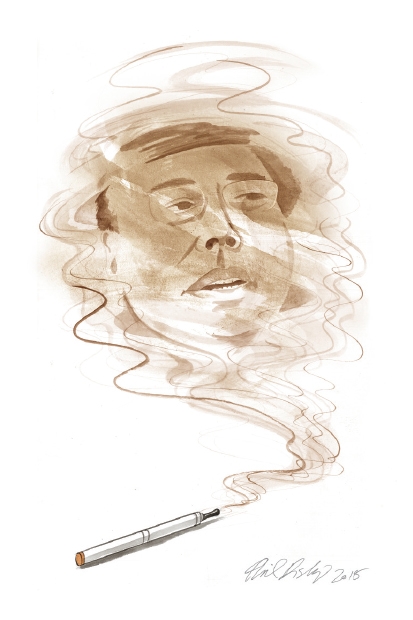Few people have heard of Hon Lik, which is a pity because he’s probably saved more lives already than anybody else I have met. Twelve years ago, he invented vaping — the idea of getting nicotine vapour from an electronic device rather than a miniature bonfire between your lips. Vaping is driving smoking out at an extraordinary rate, promising to achieve what decades of public health measures have largely failed to do. And it is doing so without official encouragement, indeed with some official resistance.
Via an interpreter, and sucking on an electronic pipe, Mr Hon told me how it happened. And here is the key point, the one that panjandrums of public health still seem to miss. He invented vaping in order to stop smoking, and that’s what it’s used for today.
He says he was smoking two packs of cigarettes a day while working as a chemist at the Liaoning Provincial Institute of Traditional Chinese Medicine. He thought: ‘How can I quit?’ He tried cold turkey several times and failed. In 2001 he tried a nicotine patch but it gave him nightmares when he forgot to take it off at night, and it failed to replicate the initial rush of a cigarette.

Being a chemist with a penchant for electronics, he went into the laboratory and set about emulating the effect of smoke without a fire. The lab where he worked had a good supply of pure nicotine, used for calibrating other products. He needed to find a way to vaporise it instantly, and began with ultrasound, later turning to a heating element.
His first machine was a monster. By 2003 he had filed a patent on a smaller, more practical model. ‘I already knew it would be a revolutionary product,’ he told me with a smile.








Comments
Join the debate for just £1 a month
Be part of the conversation with other Spectator readers by getting your first three months for £3.
UNLOCK ACCESS Just £1 a monthAlready a subscriber? Log in